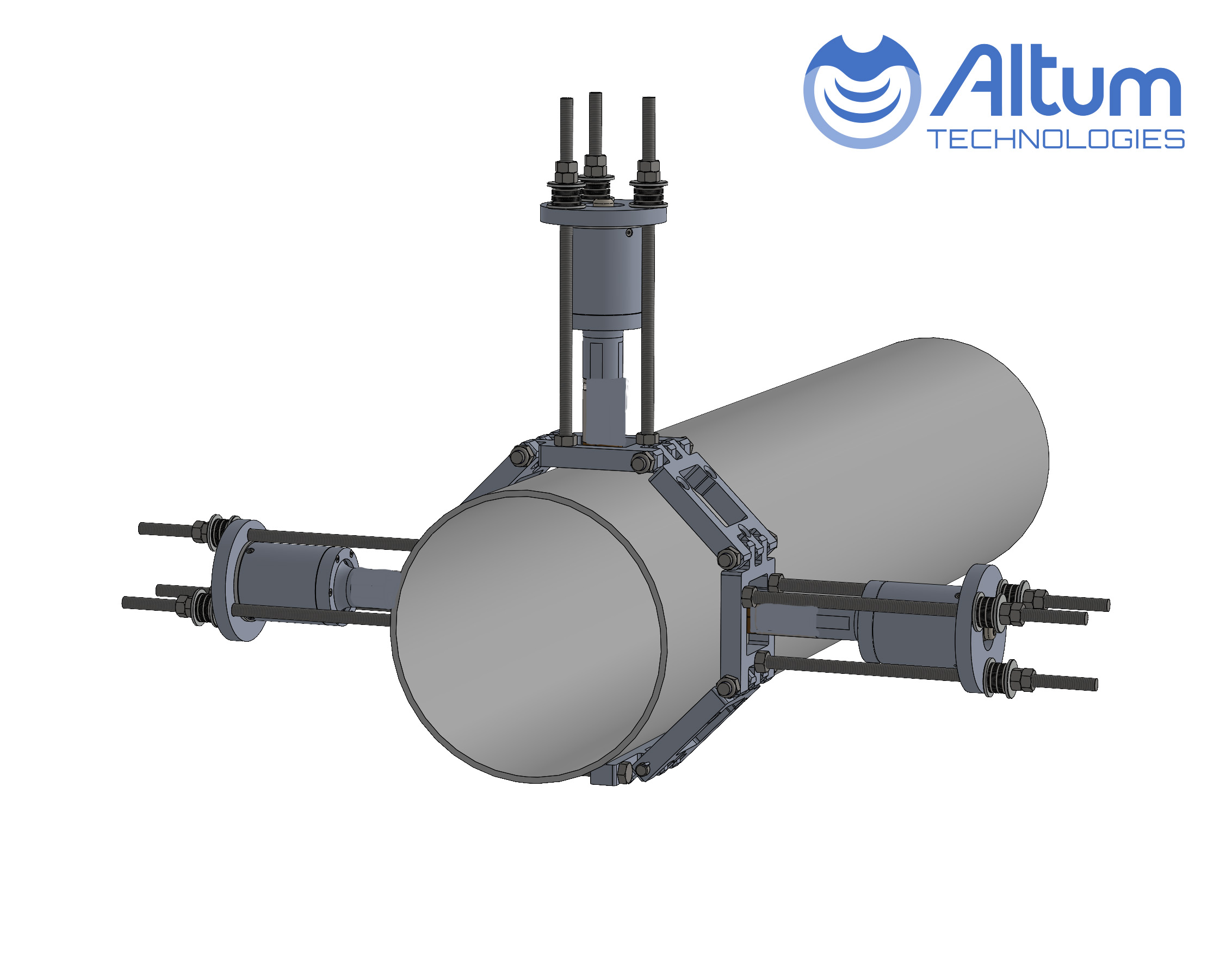In industrial settings where cleanliness and efficiency are important, Clean-in-Place (CIP) systems represent a revolutionary approach to equipment maintenance. This automated cleaning method has transformed how facilities maintain their processing equipment, especially in industries where contamination risks must be minimized.
What is Clean-in-Place (CIP)?
Clean-in-Place, commonly abbreviated as CIP, is an automated cleaning method used in industrial processing facilities to clean interior surfaces of pipes, vessels, equipment, filters, and associated fittings without disassembly. This approach allows cleaning to occur while equipment remains in its operational location, eliminating the need for time-consuming dismantling and manual cleaning procedures.
Clean-in-Place (CIP) systems primarily use chemicals like caustic solutions, acids, and sanitizers to clean industrial equipment. However, modern CIP methods also include alternatives such as high-temperature water/steam, mechanical action through high-pressure sprays and turbulent flow, ultrasonic technology, electrolyzed water, UV light, and CO₂ cleaning. The specific approach depends on the industry requirements, contamination type, equipment materials, and environmental considerations.
CIP technology has become the standard in industries where strict hygiene requirements exist, including:
- Food and beverage production
- Pharmaceuticals
- Brewing and dairy processing
- Chemical manufacturing
- Cosmetics production
It is also used across other industries, such as energy generation and pulp and paper.
The CIP Process Steps
A typical cleaning-in-place method follows a systematic procedure designed to ensure thorough sanitization while optimizing resource usage:
- Pre-Rinse: Initial removal of loose soil and product residues using ambient or warm water.
- Detergent Circulation: Alkaline or acidic cleaning solutions are circulated through the system to remove protein-based soils, mineral deposits, and other contaminants.
- Intermediate Rinse: Water is used to flush away detergent and dissolved soils.
- Sanitization: Chemical sanitizers or hot water are applied to eliminate remaining microorganisms.
- Final Rinse: A final water rinse removes any sanitizer residues, leaving the equipment ready for production.
- Verification: Quality control measures confirm cleaning effectiveness through various testing methods.
The CIP process is highly customizable, with parameters tailored to specific cleaning requirements, soil types, and equipment configurations. Depending on the method used, the steps—such as the number of rinses needed—can vary. Thus, not all CIP methods offer the same benefits to the business; some require more effort and resources and have a greater environmental impact than others. You can read more about CIP systems here.
CIP Cleaning vs. Traditional Cleaning Methods
Comparing the cleaning-in-place method with conventional cleaning approaches, such as manual scrubbing, high-pressure washing or boil-outs, reveals several distinct advantages:
CIP
| Automated process requiring minimal human intervention |
| Consistent, repeatable results |
| Reduced exposure to chemicals for workers |
| Minimized production downtime |
| Lower water and chemical consumption |
| Reduced risk of equipment damage |
Manual Cleaning
| Labor-intensive with significant manual effort |
| Variable cleaning quality dependent on operator |
| Higher chemical exposure risks |
| Extended production interruptions |
| Often requires more resources |
| Higher potential for component damage during disassembly |
What Are the Benefits of Implementing CIP Systems?
Organizations implementing clean-in-place systems typically experience:
Enhanced Food (or Other Product) Safety and Quality: Standardized CIP procedures ensure consistent cleaning results, which help maintain product integrity and consumer safety.
Operational Efficiency: With reduced cleaning times and labor requirements, facilities can maximize production uptime.
Resource Conservation: Modern CIP systems optimize water, energy, and chemical usage through precise control systems, and some CIP systems don’t even require the use of chemicals or extra water.
Compliance Assurance: Automated documentation of cleaning cycles helps meet regulatory requirements and standards.
Extended Equipment Lifespan: By eliminating frequent disassembly, CIP processes reduce wear and tear on processing equipment.
Challenges in CIP Implementation
While the benefits are substantial, implementing effective CIP cleaning does present certain challenges:
Initial Investment: The upfront cost of installing comprehensive CIP systems can be significant, though the long-term ROI typically justifies this expenditure.
System Design: Effective CIP requires equipment designed with cleanability in mind, incorporating proper spray coverage, flow dynamics, and drainage. This does not apply to all CIP systems equally, and depends on the chosen method. E.g., ultrasound does not require spray coverage.
Validation: Ensuring that cleaning processes consistently reach all surfaces and effectively remove contaminants requires thorough validation protocols.
The Future of CIP Technology
As industries continue to prioritize efficiency and sustainability, CIP technology is evolving to include:
- Advanced sensors for real-time cleaning verification
- AI-driven optimization of cleaning parameters
- Reduced environmental footprint through more efficient resource utilization
- Integration with broader facility management systems
Conclusion
Clean-in-Place systems represent a critical advancement in industrial cleaning practices. By understanding what CIP cleaning is and implementing proper CIP process steps, facilities can achieve higher standards of cleanliness while improving operational efficiency and resource management. As technology continues to evolve, the capabilities and applications of CIP systems will only expand and their essential role in modern industrial processing.
Want to learn more about using ultrasound as a CIP method? Contact our experts to learn more about how it could benefit your process.
You can also find answers to commonly asked questions here: https://altumtechnologies.com/frequently-asked-questions-about-altums-solution/
Don’t forget to follow us on LinkedIn to see our future insights and news.

